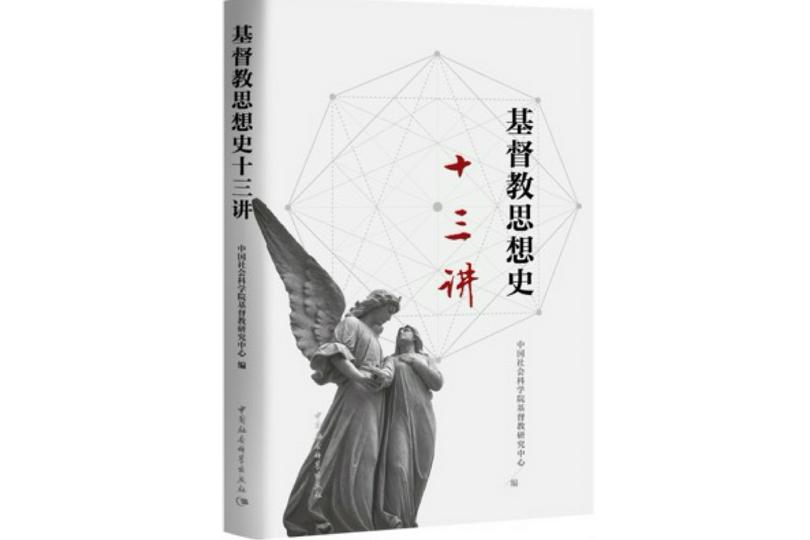In September 2024, the China Social Sciences Press published the first edition of Thirteen Lectures on the History of Christian Thought, edited by the Centre for Christian Studies at the Chinese Academy of Social Sciences (CASS). Below are the snapshots of this book's thirteen lectures.
Lecture 1 by Dong Jiangyang – What Kind of Christianity, What Kind of Christian: Factions and Divisions in Modern Christianity
In Christianity, internal factions have historically been defined by established denominations or sects. In the 20th century, however, there has been a shift towards a cross-denominational model based primarily on theological positions. This shift has given rise to numerous new alliances, movements, and trends, leading to a dichotomy between two major camps: the liberal and the conservative. This article aims to analyze, dissect, and evaluate the causes, factions, contexts, divisions, and contradictions of factionalization and grouping within contemporary Christianity.
Lecture 2 by Yang Huaming – A Discussion on the Dialectics of Christian Theology
Based on an exploration of the history of dialectics and an analysis of the concepts of dialectics, this article concludes that dialectical theology is an organic dialectical system based on the “identity” of the Triune God, with the “relevance” of God to the world as its carrier, and composed of three key elements: “structural dialectics,” “substantive dialectics” (further divided into “dialectics of the sacred” and “historical dialectics”), and “methodological dialectics.”
Lecture 3 by Tang Xiaofeng – From Highbrows to Lowbrows: A Review of the History of Christianity from Constantine to AD 600
The concept of God’s consciousness is essentially a reflection of human consciousness. Therefore, it is inevitable that human judgments of theological disputes based on God’s name are inherently limited and fallible. If we were to compare the dedication of the early apostles and church fathers, who were willing to sacrifice themselves for a pure and true faith, to the performance of highbrow music, then Jesus’ followers in the Roman Empire 300 years later, when faced with the sudden acceptance and approval of the secular world, they quickly shifted their focus to more popular tunes.
Lecture 4 by Liu Guopeng – An Analysis of the Ancient and Modern Transformations of the Roman Curia from the Perspective of Canon Law
The Roman Curia, as the representative of the Pope in overseeing pastoral responsibilities for the global Catholic Church, serves as the central governing body and a vital component of the Holy See. Its role is of utmost importance, functioning in two distinct dimensions. Firstly, it operates as a nation’s central government, managing administrative, judicial, and authoritative functions. Secondly, as an integral part of the Holy See, it carries out the tasks of teaching, sanctifying, and managing on behalf of the Pope. The Roman Curia acts as a crucial intermediary, enabling the Pope to effectively govern the Catholic Church worldwide.
Lecture 5 by Liu Guopeng – Papal Primacy: Origin, Legitimacy, and Function
Papal primacy serves as the cornerstone of the Catholic Church’s extensive and interconnected ecclesiastical hierarchy. It is also a crucial factor in establishing the Holy See’s international sovereignty. Without this foundational principle, the distinctive features that set the Catholic Church apart from other Christian denominations and major world religions would be compromised.
Lecture 6 by Zhuo Xinping – The Pinnacle of Thomas Aquinas’s Journey in Theology
Thomas Aquinas skillfully utilized Aristotelian philosophy to develop the medieval scholastic philosophical system, blending philosophical rationality and logical argumentation with theology. He formulated five arguments to demonstrate the existence of God, including the Cosmological Argument and Teleological Arguments, while advocating for a form of moderate realism. Aquinas delved into essential cognitive concepts such as existence, essence, and being, underscoring the belief that existence is inherent in God’s essence. His theories stand as the epitome of theological excellence in the evolution of medieval Christian thought.
Lecture 7 by Zhuo Xinping – Bonaventure’s Fascination with Mystical “Wisdom”
As a scholastic theologian, Bonaventure approached theology with a sapiential perspective rooted in mysticism. His emphasis on the importance of a fervent pursuit of wisdom set him apart from his contemporaries. Bonaventure did not see wisdom (sapientia) simply as the use of reason or as a speculative science. Instead, he believed that wisdom could be found in experiences such as love, peace, ecstatic union with God, and the elevation of the spirit. He believed that faith was more important than reason in the pursuit of theological understanding. Bonaventure also explored complex theological concepts such as overflow and illumination, and archetype and copy.
Lecture 8 by Zhou Weichi – The Succession of the Doctrine of Imago Dei: Thomas Aquinas’ Succession to and Transformation of Augustine’s Imago Dei Doctrine and Its Problem
When considering the Imago Dei doctrines, Aquinas adopted Augustine’s psychological approach in the analogy of the Trinity, which compares God’s image in humans to the acts of knowing and loving. However, Aquinas also modified Augustine’s Imago Dei doctrines by replacing the Augustinian concept of “memory-understanding-love” with “mind-understanding-love”. In doing so, Aquinas overlooked or omitted an important concept of Augustine’s – the idea of “memoria sui/se nosse, where “memoria” signifies self-awareness in a phenomenological sense.
Lecture 9 by Tang Xiaofeng – The Hybridization of Buddhism, Daoism, and Christianity: The Sinicization Attempt by Nestorianism in the Tang Dynasty
During the Tang Dynasty, Confucianism, Buddhism, and Taoism began to merge their intrinsic doctrines, moving away from their traditional separation. In this era of ideological fusion, Christianity’s doctrine of divine transcendence was seen as a minority theory that eventually merged with the ideas of exhortation to goodness, understanding the idea of “karma” – cause and consequence, the liberation of the self from desires and wishful thinking, and the pursuit of virtues.
Lecture 10 by Zhou Weichi – The Spread of Augustine’s Doctrine of Imago Dei to the East and Its Challenges
Augustine’s theory of the renewal of the image of God in man examines the concept of the imago Dei from a soteriological perspective. This article examines the history of the spread of Augustine’s theory to the East, highlighting the presence of two schools within it. The first school, as the mainstream, upheld the traditional Augustinian “memory-understand-love” theory of the image of God, while the second school, as a branch, leaned towards Aquinas’ “mind-understand-love” theory of the imago Dei. In the context of China during the Ming and Qing dynasties, these schools each offer their own insights into how to renew the image of God in human beings.
Lecture 11 by Dong Jiangyang – Deism and Its Influence on the Founding Fathers in America
Deism emerged during the Enlightenment as a new theological perspective that departed from traditional Christianity. Instead of relying on revelation, mysticism, and transcendentalism as in traditional Christianity, Deism sought to reinterpret and reconstruct Christian theology based on the principles of nature and reason. This article examines the development, manifestations, and characteristics of Deism in North America and explores its influence on the Founding Fathers and Framers. It also examines the alliances, divisions, and transformations within and beyond Christianity in America.
Lecture 12 by Yang Huaming – Anabaptist Theologian Yoder and Christian Pacifism
This article explores the ideas of contemporary Christian theologian John Howard Yoder on Christian pacifism. By examining Yoder’s life, exploring the history and theology of Anabaptism, and analyzing Yoder’s book The Politics of Jesus, his pacifism theology is deeply rooted in the anti-Constantinian principles of Anabaptism. Yoder’s theology is built on the pillars of obedience, revolution, unity, and eschatology. The radical and revolutionary nature of Yoder’s pacifism theology gives it tension and vitality.
Lecture 13 by Huang Ying – The Peace Ethic Hidden in the Manuscript of Bonhoeffer’s Ethics
Analyzing Bonhoeffer’s thoughts on peace as revealed in the draft of his book Ethics, written during the Second World War (February 1940 to April 5, 1943), presents a challenge. The draft of Ethics does not contain many explicit references to peace. This raises the question of whether Bonhoeffer continued his previous contemplations on peace in this work. If the answer is affirmative, how can we interpret the ethical principles of peace that Bonhoeffer cryptically implied during the war?
- Translated by Joyce Leung












